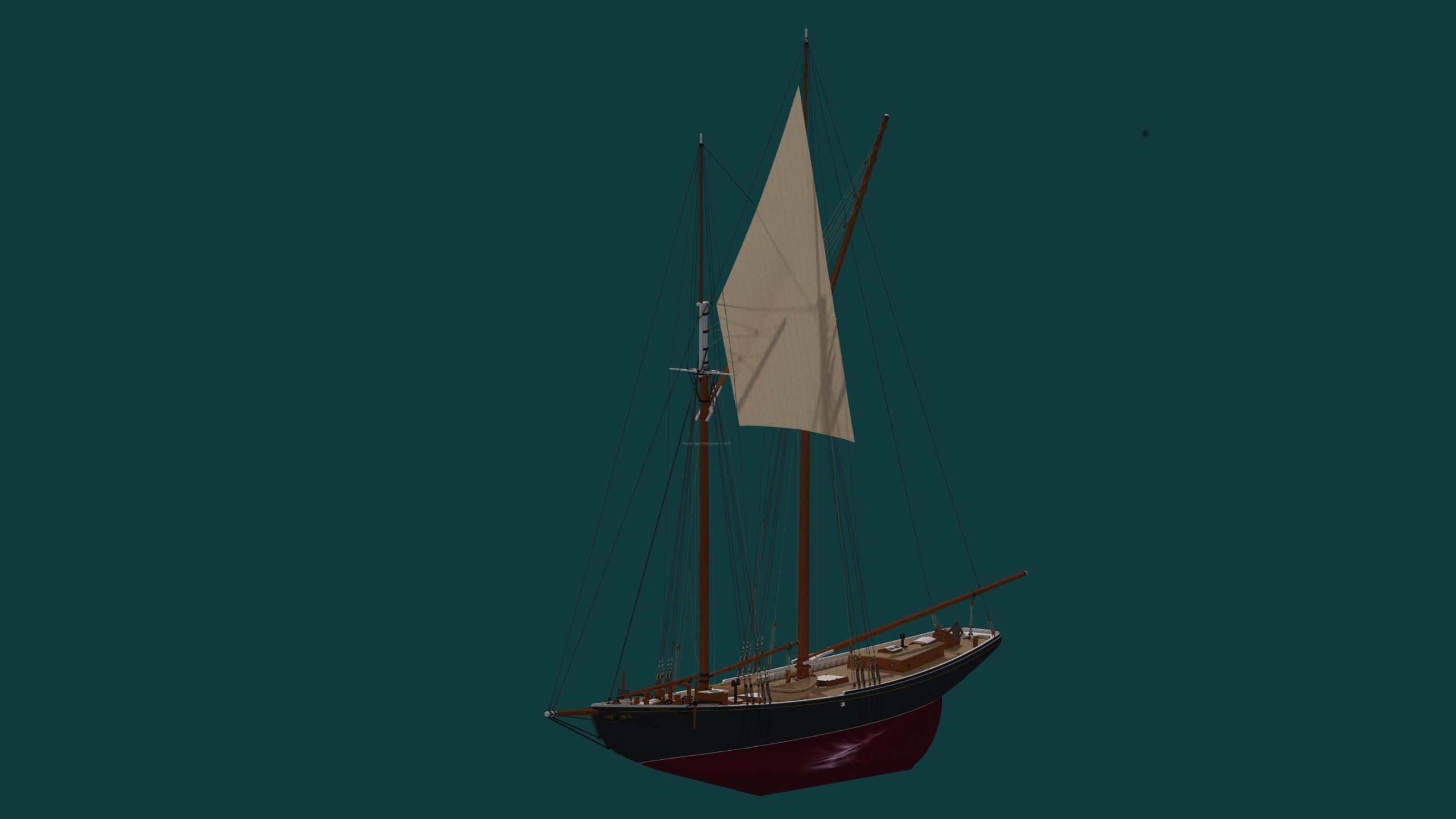
Bluenose 1921 schooner rigged historically accurate 3D model
The aim of the model is to illustrate how things really worked aboard Bluenose,what is the real geometry,and to tell a story about how it feels to sail and operate the shooner.
All you see in preview is pure geometry, no mapping is applied except the water reflection which comes from light sources.So if you see deck planks, ornaments or name plates they are really the mesh.Lines (ropes) are curves with modifers.
Cheap photorelistic use of maps is contrary to my style.
The model uses curves to define ropes logic.All the ropework can be modified by the particular curves that define them.
Ship's running rigging is provided with constraints to animate it.There is no a skeleton of bones, you may wish to apply one, but it left to you to decide it's purpose.Constraints and helpers are used instead. Aimation is reversed, eg:grab a dory (a smal boat), tackles connected to it will follow.
Moving parts:spars, running rigging, the dory lift.Not moving parts:anchors, anchor winch, anchor cables
Original plans embedded in *.blend file
File format:Blender 2.79 Blender3d is free.Used modifiers (internal): curve, screwMaterials for Cycles renderLights.IMPORTANT: Underwater part of the mesh of the hull is not included in the download.For anti-theft security it will be sent to you at no cost once you send me an email provided in the model file.
For more about the model itself visit www.aid.edu.pl/BN/index.php
Technical help for buyers provided via direct email communication with the Author.
The model is based on the original designer's plans of the frame, deck layout and sail plan.The model's scale is metric.Extensive research of source data was conduted to model the details.
Bluenose was built in the Smith & Rhuland Shipyard, Lunenburg, Nova Scotia.She was launched on 26 March 1921One in a long line of North Atlantic Great Banks fishing schoonersshe is an exemplary optimum of utility and speed in history of sailing.





















